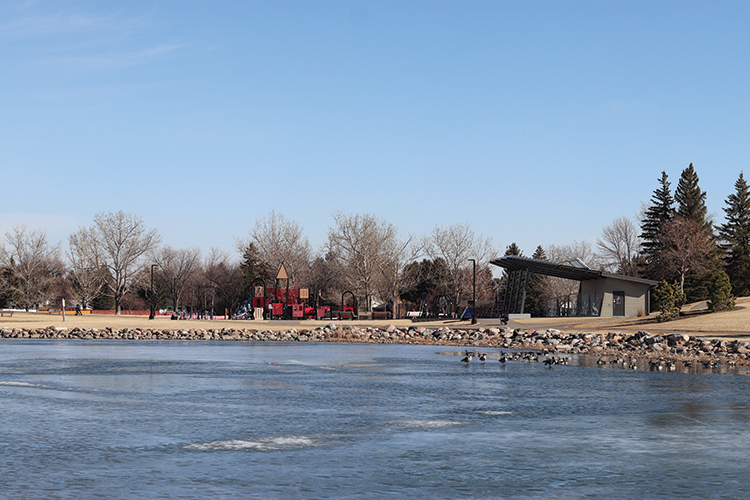Current Temperature
17.1°C
Ice safety important as southern Alberta shifts to winter
Posted on November 24, 2021 by Sunny South News As temperatures cool, , many resident wanting to skate are being warned about the risks that come with skating on wild ice.
As temperatures cool, , many resident wanting to skate are being warned about the risks that come with skating on wild ice.By Jaxon McGinn
Local Journalism Initiative Reporter
Sunny South News
Due to colder weather conditions in southern Alberta during this time of year, many lakes, ponds, and other bodies of water in southern Alberta become dangerous. Depending on the weather, they can turn from ice to open water, and back again. That means people who are itching to get outdoors to do some skating or ice fishing need to exercise caution.
Many factors affect ice thickness, including the type of weather, location, the time of year, and other environmental factors such as the water depth and size of the body of water, current tides, and additional moving water and chemicals, including salts.
The colour of the ice may also indicate the strength of the ice. Clear blue ice is the strongest compared to when the ice is grey — that is when you shouldn’t be on the ice since it is unsafe and indicates the presence of water. The minimum ice thickness should be 15 cm for walking or skating alone, 20 cm for skating parties or games and snowmobiles, and around 25 cm for it to be safe for any snowmobiles.
“The big aspect on that is knowing the depths of water beforehand or knowing what the depth of the water is whatever the collection area you might be on and being knowledgeable of the flows of water and being aware to the temperature,” said Jeremy Wickson, Lethbridge County director of Public Operations.
Around southern Alberta, many towns are reminding residents to only embark on ice surfaces when it’s safe to do so. In Coaldale, there are many areas where people have access to lakes or ponds to walk or skate, including Eight Mile Lake, Henderson Lake, Stirling Lake, Chin Lake, or Park Lake.
In southern Alberta, there are chinook winds that bring warmer temperatures. And that can quickly affect the melting rate for ice along the shore and near bridges, leaving ice too thin to support the average weight of an adult human.
Signs that read “Caution Public Notice: Ice Unsafe” are posted at lakes and ponds between fall and spring, which skaters should read unless extra signs are posted to designate a safe skating area.
“Outside of having some storm pond and wastewater lagoon and maybe a couple of reservoir pieces, most of our signs are up all year round on those types of areas,” added Wickson.
Fire and emergency services also reminds residents to keep their pets on a leash when walking near ice-covered water. They say pets are not aware of the hidden danger of falling through the ice.
For further information about ice safety, you can visit the Government of Canada website at canada.ca.
Leave a Reply
You must be logged in to post a comment.

